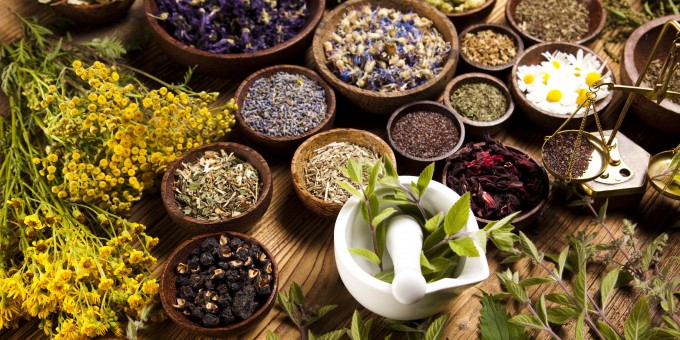The use of herbs as medicinal remedies dates back to ancient times and is found in diverse cultures worldwide. Early humans recognized their dependence on nature for survival and health, relying heavily on the diverse array of plant resources for nourishment, clothing, shelter, and healing. Guided by intuition, taste, and learned experiences, our ancestors experimented with various plants, animal parts, and minerals to treat a range of ailments.
Over time, they learned to distinguish between beneficial plants with healing properties and those that were harmful, while also discovering effective combinations and methods of preparation. Across ancient civilizations, communities diligently recorded their herbal knowledge, leading to the development of comprehensive herbal guides.
Even in modern times, a significant portion of medicinal knowledge has been derived from traditional herbal practices of indigenous cultures. This wealth of plant-based remedies has influenced medical systems worldwide, with herbal medicine remaining integral to many communities’ healthcare traditions. Medicinal plants are abundant globally, particularly in tropical regions, and have contributed to the development of numerous pharmaceuticals. In fact, a substantial portion of modern drugs can be traced back directly or indirectly to plants, demonstrating the enduring impact of herbal medicine on the discovery of therapeutic compounds.
Herbal Medicine
A herb is a plant or a part of a plant that holds value for its medicinal, aromatic, or flavor-enhancing properties. Herbs act as natural chemical laboratories, producing various chemical compounds. Herbal remedies typically consist of plant portions or extracts containing multiple constituents, which often interact synergistically. Herbal medicine, also known as herbalism, involves using herbs or herbal products for their therapeutic benefits. These products can be derived from any part of the plant, such as leaves, roots, bark, seeds, or flowers, and can be consumed orally, applied topically, inhaled, or ingested in various forms.
Herbal products contain a diverse array of naturally occurring biochemicals from plants, many of which contribute to their medicinal effects. Chemicals with known therapeutic properties are referred to as “active ingredients” or “active principles,” and their presence depends on various factors such as the plant species, harvest time, soil type, and preparation method.

In recent years, there has been a growing interest in natural therapies worldwide, both in developing and developed countries. Approximately 80% of the global population, especially in developing nations, relies on herbal medicine as their primary source of healthcare due to factors like poverty and limited access to modern medicine. Traditional medical practices are deeply rooted in the culture of these communities.
In Western societies, herbal therapies are sought after for numerous reasons, primarily for their perceived ability to promote overall wellness, echoing the practices of our ancestors. Many view herbal medicines as a holistic and moderate approach to healing, leading to significant expenditures on herbal products. Consequently, herbal remedies represent a substantial portion of the global drug market.
To derive the desired benefits from herbal preparations, individuals must adhere to the prescribed dosage and duration of use. While most herbal preparations are generally considered safe, some herbs, like other biologically active substances, can have toxic effects and undesirable side effects.
The variability in the constituents of herbs due to genetic, cultural, and environmental factors presents challenges in the use of herbal medicines. Issues such as inconsistent availability and quality of raw materials, diverse and sometimes unknown active principles, and difficulties in controlling and ensuring the quality of different batches of preparations are common. In many countries, herbal products enter the market without undergoing proper scientific evaluation or mandatory safety and toxicological studies.
The lack of effective regulation of manufacturing practices and quality standards poses risks to consumers, who may unknowingly purchase inferior products. Establishing a well-defined and consistent composition of herbal drugs is necessary for ensuring their quality, given the inherent variability of plant-based products.
Quality Control and Standardization of Herbal Medicines
In essence, whether synthetic or derived from plants, all medications must meet fundamental criteria of safety and efficacy. The term “herbal drugs” refers to plants or their parts that have undergone basic processing steps like harvesting, drying, and storage to become phytopharmaceuticals. Consequently, they are subject to variability, influenced by factors such as growth conditions, geographical location, and timing of harvesting.
Standardization of herbal medicines involves establishing a set of criteria or inherent properties, consistent parameters, and defined qualitative and quantitative values to ensure quality, efficacy, safety, and reproducibility. It entails developing and agreeing upon technical standards, which are determined through experimentation and observation. These standards outline specific characteristics exhibited by the particular herbal medicine, making standardization an essential tool in the quality control process.
Several problems not applicable to synthetic drugs often influence the quality of herbal drugs. For instance:
- Herbal drugs are usually mixtures of many constituents.
- The active principle(s) is (are), in most cases unknown.
- Selective analytical methods or reference compounds may not be available commercially.
- Plant materials are chemically and naturally variable.
- Chemo-varieties and chemo cultivars exist.
- The source and quality of the raw material are variable.
The quality of herbal products is also influenced by various factors such as harvesting techniques, drying methods, storage conditions, transportation procedures, and processing techniques (e.g., extraction methods and solvent polarity). Currently, there are no official standards established for herbal preparations. Some manufacturers conduct preliminary testing on their formulations based on their own parameters.
However, it is challenging to verify the presence of all claimed ingredients in a formulation. Therefore, a crucial initial step is to develop parameters that can accurately identify the presence of all ingredients. Various chromatographic and spectrophotometric methods, along with the evaluation of physicochemical properties, can be explored to establish patterns for identifying different ingredients. These methods can also be employed for the quantitative estimation of bioactive compound groups, such as alkaloids, flavonoids, and polyphenolic components, or for the estimation of specific compounds whenever feasible.
The Need for Standardization – Producers’ and Consumers’ Perspective
There is a global trend towards the use of herbal medicine as the limitations and risks associated with modern pharmaceuticals become increasingly evident. Regulatory authorities bear the critical responsibility of ensuring that consumers receive medications that meet standards of purity, safety, potency, and efficacy. These authorities rigorously enforce various quality standards for both raw materials and finished products, following guidelines outlined in pharmacopoeias, formularies, and manufacturing practices mandated by statutes. These standards should apply universally to all types of medication, whether part of modern medicine or traditional systems.
Despite the growing popularity of herbal products worldwide, a significant barrier to their acceptance lies in the lack of standardized quality control measures. The quality of herbal medicine, particularly the composition of its constituents in the final product, directly impacts its effectiveness and safety. However, due to the intricate and variable nature of plant-based drug constituents, establishing quality control parameters can be challenging. Modern analytical techniques are expected to aid in addressing this issue.
Additionally, the therapeutic effects of herbal medicines are often attributed to constituents that are either unknown or only partially understood, further complicated by the use of combinations of herbal ingredients in traditional practices. It is common for products to contain multiple herbal ingredients, resulting in batch-to-batch variation from the collection of raw materials onwards, especially in the absence of reference standards for identification. These variations are exacerbated during storage and further processing. Therefore, standardization efforts for herbal drugs and products should encompass the entire spectrum of activities from the cultivation of medicinal plants to their clinical application.
Given that plant materials and herbal remedies constitute a significant portion of the global market, internationally recognized guidelines for quality assessment and control are essential to ensure product safety and efficacy.
Standardization and Quality Control of Herbal Crude Drugs – Processes and Procedures
According to the World Health Organization (WHO), standardization and quality control of herbal products involve a series of processes aimed at evaluating the physicochemical properties of crude drugs. This evaluation includes various aspects, including the selection and handling of raw materials, assessment of safety, efficacy, and stability of the final product, documentation of safety and risk based on experience, as well as the provision of product information to consumers and promotional activities. Key quality indices that receive particular attention include:
- Macroscopic and microscopic examination: This involves the identification of the correct plant variety and detection of any adulterants present.
- Foreign organic matter: The removal of extraneous material from the source plant is essential to obtain the drug in its pure form.
- Ash values: These criteria are used to assess the identity and purity of the crude drug, including total ash, sulphated ash, water-soluble ash, and acid-insoluble ash.
- Moisture content: Monitoring moisture content is crucial for accurate estimation of the actual weight of the drug material. Lower moisture levels indicate better stability against product degradation.
- Extractive values: These values represent the weight of chemical constituents extractable from the crude drug under various solvent conditions, serving as indicators of its chemical composition.
- Crude fiber analysis: This assessment aids in identifying the presence of woody material components and serves as a criterion for assessing purity.
- Qualitative chemical analysis: This entails identifying and characterizing crude drugs in terms of their phytochemical constituents. Various analytical techniques are employed to detect and isolate active compounds. Phytochemical screening involves botanical identification, solvent extraction, purification, and characterization of active constituents with pharmaceutical significance.
- Chromatographic analysis: This involves identifying crude drugs based on major chemical constituents serving as markers.
- Quantitative chemical analysis: This aims to estimate the quantities of major classes of constituents present.
- Toxicological studies: These studies are conducted to identify pesticide residues, potentially toxic elements, and assess safety through tests such as LD50 (lethal dose for 50% of test subjects) and microbial assays to detect harmful microorganisms.
The aforementioned processes involve a wide range of scientific investigations, including physical, chemical, and biological evaluations utilizing various analytical methods and tools. These investigations serve diverse purposes aimed at ensuring the quality of herbal products.



